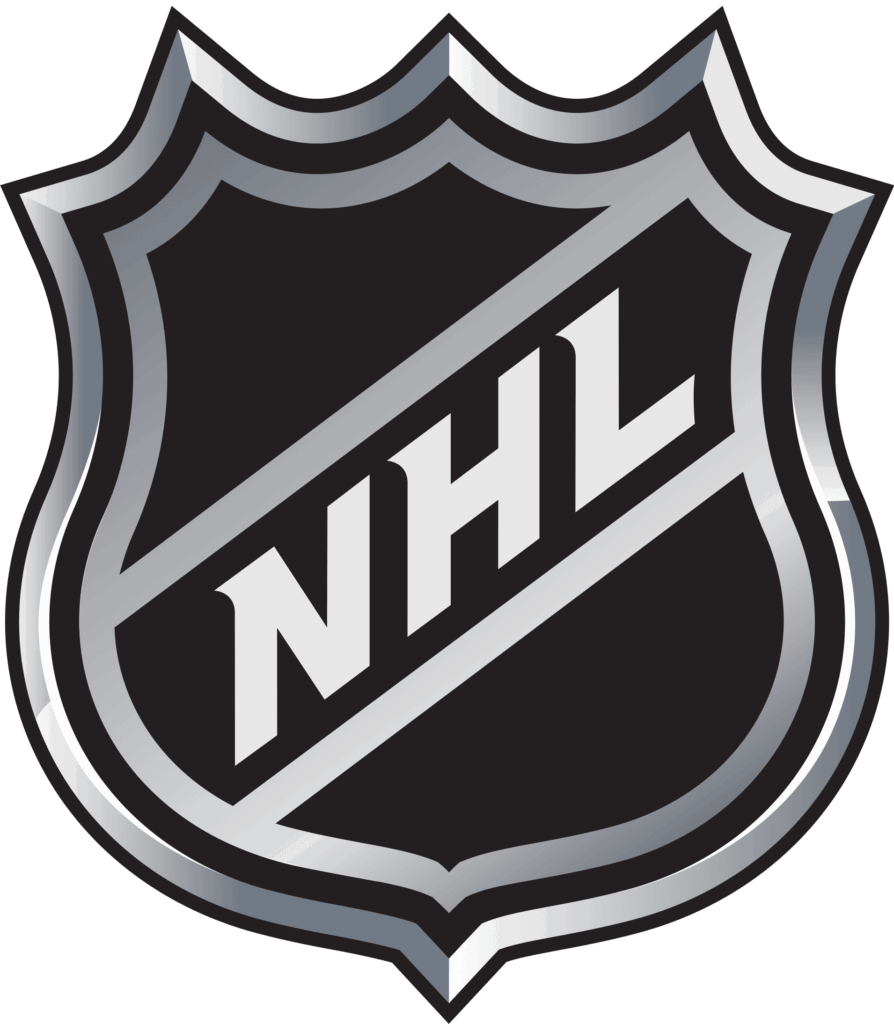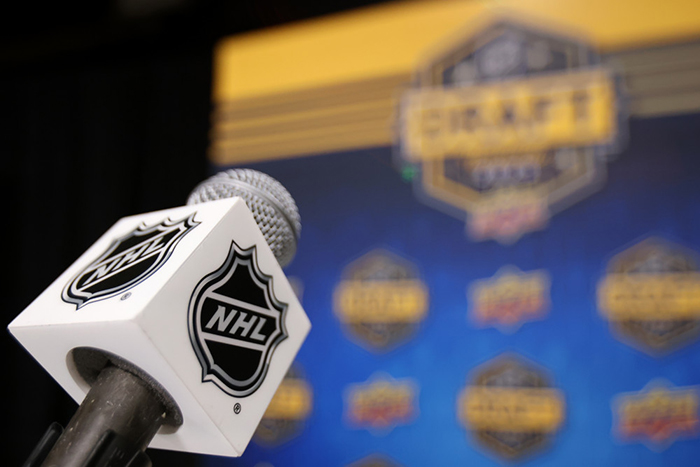The First Real Look at a Future Pillar
The Chicago Blackhawks may be deep into a long-term rebuild, but if there’s one thing their fanbase and front office agree on, it’s this: Ayrtom Levshunov is central to the plan.
Drafted second overall in 2024, Levshunov came into this season facing an unusual mix of expectation and patience.
Defensemen picked this high are rare. In the last decade and a half, only nine defensemen have gone top-3 — four at No. 1, three at No. 2, two at No. 3.
The success rate varies, but the expectation remains constant:
future franchise defenseman.
Across the league, rebuilds are built around high picks stepping into roles early. In most organizations, their top-three selections play NHL hockey within one to three years — sometimes after an extra junior season, an NCAA run, or an additional year in Europe.
Levshunov took a different route. A route that has shaped him into one of the most intriguing young defensemen in the NHL today.
This is the deep-dive into his rise, his early struggles, his measurable improvement, and why — after 18 games — the Blackhawks believe they have something special.
A Unique Development Path
The Belarus native didn’t follow the traditional development arc most elite blue-line prospects take. Standing at 6’2″, he left Eastern Europe early for the USHL’s Green Bay Gamblers, where scouts first started circling his name.
I watched him often in those days — long before the mainstream hype started building. Even then, the signs were obvious:
- Smooth, powerful skating
- Offensive instincts that jumped off the page
- Strong frame and mobility
- Ability to quarterback shifts even as a teenager
When I evaluated him live, I knew he wasn’t just another rebound-year draft riser. He was a genuine top-five talent. And as scouts talk, share notes, debate, and compare, the consensus quietly formed: this kid has the tools to become a top-pair NHL defenseman.
After dominating at times in the USHL, he took an accelerated step — playing NCAA hockey with Michigan State a year earlier than many prospects.
His draft-year production was impressive, not just because of the numbers, but because of his age relative to the league.
When the Blackhawks selected him second overall, they didn’t hesitate to challenge him:
- 52 games in the AHL (5 goals, 17 assists, 22 points)
- 18 games with Chicago late in the season (6 points)
He didn’t look overwhelmed. He didn’t look out of place. He didn’t look like a kid.
He looked like an NHLer.
What Scouts Saw Before the Draft
Scouts across the league were fascinated by Levshunov because he possesses a rare blend that NHL teams covet:
Size × Skating × Offense × Projection
Some compared him to Zach Werenski, others to Charlie McAvoy — strong, assertive, two-way defenders who control pace and can run a power play.
Here are the collective impressions from professional evaluators before draft day:
What They Loved
- Elite physical tools
- A heavy, accurate shot
- Ability to move pucks cleanly under pressure
- Confidence activating off the rush
- Smooth mechanics and strong posture skating
- Power play quarterback traits
- Creativity inside the offensive blue line
What Raised Questions
- Consistency shift-to-shift
- Defensive awareness under stress
- Decision-making in tight areas
- Forcing plays when simple options existed
- Handling retrievals cleanly
- Occasional puck-watching
And yet, even with the criticisms, scouts repeatedly pointed to his upside:
“His ceiling is extremely high. The physical tools are top tier. He’s still figuring out how good he can become.”
“He’s strong, smart, and mobile. With the right partner, he could play NHL games right now.”
“His point totals undersell him — in junior he would’ve blown the league open.”
The common thread:
Once he puts it all together, the sky opens up.
What Last Season Told Us – AHL & NHL Combined
In the AHL, the scouting reports showed a player who could dominate in some areas but still needed refinement:
AHL Strengths
- Strong defensive stick
- Hard physical net-front presence
- Timely pinches
- Effective puck retrievals under pressure
- Strong rush defense (surfing, closing space)
- Above-average skater with a powerful stride
AHL Weaknesses
- Limited creativity under pressure
- Trouble creating against aggressive forechecks
- Difficulty solving problems without a clean option
- Shots that didn’t consistently find lanes
- Overaggression in some reads
- Puck-watching in coverage
- Retrieval decisions too slow or too conservative
One detailed AHL report summarized him perfectly:
“He has the tools — skating, handling, physicality, shot — but the hockey sense is still average. He’s not great at making plays under pressure or manipulating defenders. Right now, he projects as a 2–4 guy, not a No. 1. But he’s young. His game will evolve.”
In his first 18 NHL games last season, the themes continued:
- He wasn’t lost.
- He wasn’t scared.
- He showed flashes of high-end ability.
- He struggled with pace, physicality, and decision-making at times.
But let’s be honest: that’s every rookie defenseman in the NHL.
I walked away impressed. Not because he was perfect — but because he was ready.
2025-26: The First Real Full Season (18 GP)
And this is where his story gets interesting.
Levshunov entered the year more confident, more experienced, and more prepared for the NHL’s pace and decision speed. And through his first 19 games, his improvement is measurable — in the numbers, in the video, and in the way the Blackhawks trust him.
2024–25 vs 2025–26 Statistical Comparison
| Stat | 2024-25 Season (18 GP) | 2025-26 Season (18 GP) |
| Goals | 0 | 0 |
| Assists | 6 | 10 |
| Points | 6 | 10 |
| Plus/Minus | -13 | 2 |
| Shots on Goal | 21 | — |
| Shot Attempts | 66 | 38 |
| Shots Blocked (Against) | 31 | 13 |
| Time on Ice (Avg) | 20:19 | 16:11 |
| Blocked Shots | 20 | 16 |
| Hits | 19 | 20 |
| Giveaways | 26 | 26 |
| Takeaways | 4 | 5 |
| Corsi For % (CF%) | 43.7% | 46.0% |
| PDO | 97.2 | 106.7 |
| On-Ice Goal Differential | -7 | 10 |
| On-Ice Goals % | 41.7% | 64.7% |
| On-Ice Expected Goals % | 39.4% | 50.6% |
This table alone tells an important story:
- Better underlying numbers
- Better defensive results
- Better shot share
- Better expected goals
- Fewer goals against
- More trust
- Better confidence
This is not marginal improvement.
This is significant developmental progression.
The NHL Edge Profile:
What The Data Says About His Tools
| Category | Levshunov | Percentile | NHL Avg (Position) |
| Max Skating Speed (MPH) | 22.15 | 82nd | 21.30 |
| Speed Bursts Over 20 MPH | 9 | 60th | 9.5 |
| Skating Distance (Miles) | 41.75 | <50th | 39.50 |
| Hardest Shot (MPH) | 89.10 | 58th | 87.03 |
| Shots on Goal | 19 | 58th | 18.3 |
| Shooting % | 0.0% | <50th | 5.4% |
| Goals | 0 | <50th | 1 |
| Offensive Zone Time | 43.4% | 74th | 41.8% |
Interpretation:
- He’s already skating faster than most NHL defensemen.
- His shot is above average — he just isn’t using it enough.
- His offensive zone time suggests he is driving play, not chasing it.
This matches exactly what the Blackhawks hoped for.
Early-Season Struggles: Where He Started
The beginning of the season was rocky — as expected.
1. Decision-Making
This is always the hardest adjustment for young defensemen. He struggled with:
- When to pinch
- When to hold the line
- How tight to play gaps
- How to position himself in defensive coverage
- Making quick decisions in all three zones
2. Defensive Positioning
He occasionally:
- Overcommitted
- Lost inside body position
- Played from the wrong side of checks
- Used poor stick angles
3. Gap Control
He hesitated.
He misread forwards’ speed.
He allowed too many controlled entries early in the year.
But these were temporary issues — and they have clearly improved.
TheTurning Point: The Game Slows Down
Over the last 8–10 games, the progression has been stark.
He is now:
- Playing faster mentally
- Reacting instead of hesitating
- Trusting his instincts
- Moving the puck decisively
- Breaking out cleaner
- Winning more battles
- Reading forechecks earlier
- Using his stick more effectively
- Supporting the rush more confidently
The biggest sign of all?
He was promoted to POWER PLAY UNIT 1
You don’t give PP1 minutes to a defenseman you don’t trust.
The reasons:
- His mobility
- His blue-line control
- His passing precision
- His vision
- His poise under pressure
This is a huge development marker.
Three Key Areas He Still Needs to Improve
1. Defensive Zone Positioning
He must:
- Maintain body position tighter
- Use his stick more proactively
- Stay on the defensive side of checks
- Improve his posture under pressure
These are details — but important ones.
2. Pinch Timing & Gap Control
Gap control starts in the neutral zone.
He must:
- Close earlier
- Trust his backwards skating
- Avoid hesitating at the blue/red lines
- Time pinches with offensive support
Rookies always fear creating odd-man rushes.
Confidence will fix this.
3. Quick Decision-Making
This is the biggest NHL jump.
The game is:
- Faster
- Smarter
- More physical
He must make:
- Faster reads
- Quicker exits
- Cleaner retrievals
- Sharper choices at the blue line
- Faster adjustments in coverage
This will come with reps.
Offensive Dynamics: His Natural Edge
This is the part that makes Levshunov special.
He is:
- An excellent skater
- Strong on his edges
- A confident puck carrier
- A natural rush supporter
- A clean transition driver
- A fluid offensive blue-liner
- A player who can create space with movement
If he starts shooting more — which he must — his offense will spike.
His instincts are already there.
Final Thoughts
Ayrtom Levshunov’s story isn’t one of instant dominance or overnight superstardom — it’s the story of a young defenseman learning how to survive, adjust, and eventually thrive in the hardest league in the world.
What stands out most about his first 18 games this season isn’t perfection or highlight moments. It’s progress, steady, visible, and earned through repetition, mistakes, corrections, and pure hockey intelligence.
The Blackhawks asked a lot of him. They didn’t shelter him. They didn’t hide him. They didn’t slow-roll his development.
They handed him real NHL minutes, real NHL responsibility, and real NHL expectations. And instead of sinking, he has risen to meet the challenge.
Every game, he looks a little cleaner with the puck.
A little more confident on retrievals.
A little sharper in his reads.
A little stronger in his body position.
A little more poised at the offensive blue line.
That is how top-pair defensemen are built — not in sudden jumps, but in steady layers.
There will be nights where he struggles, where the speed still catches him, where he misjudges a gap or loses a battle or makes a decision he wants back.
That’s normal. That’s expected. That’s the developmental tax every young defenseman pays. But what matters more is the direction of the curve — and Levshunov’s curve is unmistakably pointing upward.
The tools are all there: size, skating, strength, touch, vision, poise, offensive instincts, and a foundation of mobility that gives him runway to grow into something special.
What he’s learning now — the timing, the reads, the pacing, the patience — will determine the player he becomes.
And the truth is this: The more he plays, the better he gets. The more pressure he faces, the faster he adapts. The more trust the coaching staff gives him, the more he rewards it.
That’s the mark of a future cornerstone. That’s the trajectory of a defenseman who could anchor a blue line for a decade.
Levshunov is not finished. He’s not even close. But he’s on schedule — maybe even ahead of it — for what a second-overall defenseman is supposed to become.
Chicago isn’t just developing a young player. They’re shaping a pillar of their rebuild.
And if the first 19 games are any indication, the Blackhawks won’t have to wait long before the league sees exactly how good Ayrtom Levshunov can be.
KEEP READING:
Blackhawks Weekly Recap: (Week 1)
Blackhawks Weekly Recap (Week 2)
Blackhawks Weekly Recap (Week 3)
Blackhawks Weekly Recap (Week 4)
Blackhawks Weekly Recap (Week 5)
Blackhawks Weekly Recap (Week 6)
Blackhawks October Report Card
Looking for discussion? Check out our forums section and weigh in on what’s happening around the NHL!
Data via: NHL Edge – CapWages.Com – Natural Stat Trick




From looking indecisive in the beginning of the season to skating with confidence with he puck on his stick has been impressive.
The ability to breakdown the defense because of his skating has been a treat to watch, I’d like to see him do that on the PP.
He has had several golden chances to score in the past 3 games, he completely missed the net vs the Flames on one, he was dead center of the ice 15 feet out with no defensive pressure, just a bit high.
Thanks for your great comment. I agree with you — the difference in Levshunov from the start of the season to now is amazing. His confidence with the puck and the way he breaks down pressure with his skating is one of the big stories of the first quarter.
He really should get more PP touches because you can see the potential. And yes, he’s been close to scoring a few times lately — it’s coming. The progress he’s making at 19 years old, in real NHL minutes, is impressive to watch just like the entire Blackhawks group right now.
Always appreciate your insights!
To score a goal, you have to shoot the puck! His first tendency is to pass it. I would like to see him shoot more.